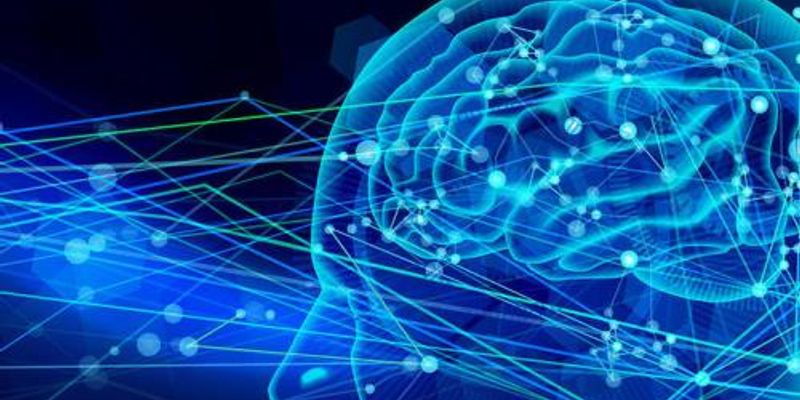Computational Model
Computational Model: is a mathematical model in computational science that requires extensive computational resources to study the behavior of a complex system by computer simulation. The system under study is often a complex nonlinear system for which simple, intuitive analytical solutions are not readily available.
-
MAR 11, 2020 | 1:30 PMLearning is often an emotional process. Emotional stimuli with different valences, such as threat and reward, can transform an otherwise neutral sensory input into one that can trigger disti...MAR 11, 2020 | 1:30 PMEpisodic memories are essential for human cognition, but the underlying neural mechanisms remain poorly understood. We utilize the opportunity to record in-vivo from human single neurons sim...Speaker: Adam Mamelak, MD , Ueli Rutishauser, PhD , Gabriel Kreiman, PhD , Jie Zheng, PhDPresented at: Neuroscience Virtual Event Series 2020
MAR 11, 2020 | 12:00 PMMechanistic understanding of neural systems is daunting to achieve in large part due to the heterogeneity of the neuronal elements in both form and function and the complexity of the circuit...Speaker: Emre Aksay, PhD , Mark Goldman, PhD , Sebastian Seung, PhD , Ashwin Vishwanathan, PhDPresented at: Neuroscience Virtual Event Series 2020
MAR 11, 2020 | 12:00 PMApproximately 300,000 people in the United States have a spinal cord injury with many of these individuals experiencing permanent motor and sensory deficits. For individuals with cervical sp...Speaker: Robert Gaunt, PhD , Michael Boninger, MD , Jennifer Collinger, PhDPresented at: Neuroscience Virtual Event Series 2020
MAR 11, 2020 | 10:30 AMThe accumulation of neurotoxic amyloid beta peptides and/or neurofibrillary tangle formation are key pathological hallmarks of neurodegenerative diseases including but not limited to Alzheim...Speaker: Michael Heneka, PhDMAR 11, 2020 | 10:30 AMThe neural basis of simple rhythmic and reflexive behaviors such as swimming and gill withdrawal have been successfully studied in nudibranchs and other gastropod molluscs because the brains...Speaker: Paul Katz, PhD , Jeff Lichtman, MD, PhD , William Frost, PhD , Deidre Lyons, PhD , Vince Lyzinski, PhD, B.Sc, M.Sc, M.Sc.E.Presented at: Neuroscience Virtual Event Series 2020
MAR 11, 2020 | 9:00 AMAlthough neuroscience has provided a great deal of information about how neurons work, the fundamental question of how neurons function together in a network to produce cognition has been di...Speaker: György Buzsáki, PhD , Attila Losonczy , Mark Schnitzer , Ivan SolteszPresented at: Neuroscience Virtual Event Series 2020
MAR 11, 2020 | 6:00 AMWe present here a framework to generate a realistic multiscale circuit model of the larval zebrafish brain – the multiscale virtual fish (MVF). The model will be based on algorithms in...Speaker: Florian Engert, PhD , Jeff Lichtman, MD, PhD , Haim SompolinskyPresented at: Neuroscience Virtual Event Series 2020
MAR 11, 2020 | 6:00 AMThe locomotion of humans and other animals requires a seamless flow of information from sensory modalities all the way to the motor periphery. As such, locomotion is an excellent system for...Speaker: Michael Dickinson, PhD , Anthony Azevedo, PhD , Clare Howard, PhD , Luke Brezovec , Sasha Rayshubskiy , Emily PalmerPresented at: Neuroscience Virtual Event Series 2020
JAN 01, 2020 | 6:00 AMMisfolded and accumulated neurodegenerative disease associated proteins (NDAPs, such as tau and alpha-synuclein) represent the major pathological hallmark in Alzheimer’s and Parkinson&...JAN 01, 2020 | 6:00 AMOpen Science has changed research by making data accessible and shareable, contributing to replicability to accelerate and disseminate knowledge. However, for rodent cognitive studies the av...JAN 01, 2020 | 6:00 AMChaperone networks are dysregulated with aging, but whether compromised Hsp70/Hsp90 chaperone function disturbs neuronal resilience is unknown. Stress‐inducible phosphoprotein 1 (STI1; STIP1...JAN 01, 2020 | 6:00 AMNormal behavior in any moving animal, including humans, relies on communication between motor systems that control movements, and the sensory systems we use to guide these actions. A critica...JAN 01, 2020 | 6:00 AMThe dopamine D4 receptor (D4R) is enriched in the prefrontal cortex where it plays important roles in cognition, attention, decision making and executive function. Novel D4R-selective ligand...JAN 01, 2020 | 6:00 AMThe study of biological function in intact organisms and the development of targeted cellular therapeutics necessitate methods to image and control cellular function in vivo. Technologies su...JAN 01, 2020 | 6:00 AMIn Andalman et al, 2018, we explored the activity of over 10,000 neurons across more than 15 regions imaged simultaneously in larval zebrafish in a novel behavioral challenge paradigm. Compl...OCT 24, 2019 | 10:30 AMSupercritical fluid chromatography (SFC) has historically been very effective for exacting difficult chiral separations, with an unmatched power in terms of enabling highly efficient enantios...OCT 01, 2019 | 8:00 AMDATE: October 1, 2019TIME: 8:00am PTIn the webinar, Introduction to Characterization of Biomolecules Using Analytical Ultracentrifugation, we discussed the fundamentals of analytical...SEP 12, 2019 | 1:30 PMScientific conferences are most beneficial to participants when they showcase significant new experimental developments, accurately summarize the current state of the field, and provide stron...SEP 11, 2019 | 1:30 PMBackground: The vast majority of all genes are contained within the genomes of the prokaryotes, including the eubacteria and the archaea. These largely single-cellular domains of life thus...Speaker: Garth Ehrlich, PhD, FAAASJUN 19, 2019 | 8:00 AMDATE: June 19, 2019TIME: 8:00am PDT, 11:00am EDT Approximately 80% of all cancers are known to be affected by both somatic mutations and copy number changes. Furthermore, r...Speaker: Ravindra Kolhe, MD, PhD , Joanna Przybyl, PhDSponsored By: Thermo Fisher Scientific - Applied BiosystemsMAY 30, 2019 | 1:30 PMTissues in the body are wonderfully organized, with specific arrangements of cells, extracellular matrix, secreted molecules, and fluid flow that synergize that create emergent functions. How...Speaker: Rebecca Pompano, PhDMAY 09, 2019 | 1:30 PMC.E. CREDITSIn 2014, the Undiagnosed Diseases Network (UDN), which is funded by the NIH, was established as a network of seven clinical sites, two sequencing cores, and a coordinating center. Later, a ce...MAY 08, 2019 | 10:30 AMC.E. CREDITSOne of the central tenants of biology is that our genetics—our genotype—influences the physical characteristics we manifest—our phenotype. But with more than 25,000 human ge...
MAR 11, 2020 | 1:30 PM
Learning is often an emotional process. Emotional stimuli with different valences, such as threat and reward, can transform an otherwise neutral sensory input into one that can trigger disti...
MAR 11, 2020 | 1:30 PM
Episodic memories are essential for human cognition, but the underlying neural mechanisms remain poorly understood. We utilize the opportunity to record in-vivo from human single neurons sim...
Speaker:
Adam Mamelak, MD
, Ueli Rutishauser, PhD
, Gabriel Kreiman, PhD
, Jie Zheng, PhD
Presented at: Neuroscience Virtual Event Series 2020
MAR 11, 2020 | 12:00 PM
Mechanistic understanding of neural systems is daunting to achieve in large part due to the heterogeneity of the neuronal elements in both form and function and the complexity of the circuit...
Speaker:
Emre Aksay, PhD
, Mark Goldman, PhD
, Sebastian Seung, PhD
, Ashwin Vishwanathan, PhD
Presented at: Neuroscience Virtual Event Series 2020
MAR 11, 2020 | 12:00 PM
Approximately 300,000 people in the United States have a spinal cord injury with many of these individuals experiencing permanent motor and sensory deficits. For individuals with cervical sp...
Speaker:
Robert Gaunt, PhD
, Michael Boninger, MD
, Jennifer Collinger, PhD
Presented at: Neuroscience Virtual Event Series 2020
MAR 11, 2020 | 10:30 AM
The accumulation of neurotoxic amyloid beta peptides and/or neurofibrillary tangle formation are key pathological hallmarks of neurodegenerative diseases including but not limited to Alzheim...
Speaker:
Michael Heneka, PhD
MAR 11, 2020 | 10:30 AM
The neural basis of simple rhythmic and reflexive behaviors such as swimming and gill withdrawal have been successfully studied in nudibranchs and other gastropod molluscs because the brains...
Speaker:
Paul Katz, PhD
, Jeff Lichtman, MD, PhD
, William Frost, PhD
, Deidre Lyons, PhD
, Vince Lyzinski, PhD, B.Sc, M.Sc, M.Sc.E.
Presented at: Neuroscience Virtual Event Series 2020
MAR 11, 2020 | 9:00 AM
Although neuroscience has provided a great deal of information about how neurons work, the fundamental question of how neurons function together in a network to produce cognition has been di...
Speaker:
György Buzsáki, PhD
, Attila Losonczy
, Mark Schnitzer
, Ivan Soltesz
Presented at: Neuroscience Virtual Event Series 2020
MAR 11, 2020 | 6:00 AM
We present here a framework to generate a realistic multiscale circuit model of the larval zebrafish brain – the multiscale virtual fish (MVF). The model will be based on algorithms in...
Speaker:
Florian Engert, PhD
, Jeff Lichtman, MD, PhD
, Haim Sompolinsky
Presented at: Neuroscience Virtual Event Series 2020
MAR 11, 2020 | 6:00 AM
The locomotion of humans and other animals requires a seamless flow of information from sensory modalities all the way to the motor periphery. As such, locomotion is an excellent system for...
Speaker:
Michael Dickinson, PhD
, Anthony Azevedo, PhD
, Clare Howard, PhD
, Luke Brezovec
, Sasha Rayshubskiy
, Emily Palmer
Presented at: Neuroscience Virtual Event Series 2020
JAN 01, 2020 | 6:00 AM
Misfolded and accumulated neurodegenerative disease associated proteins (NDAPs, such as tau and alpha-synuclein) represent the major pathological hallmark in Alzheimer’s and Parkinson&...
JAN 01, 2020 | 6:00 AM
Open Science has changed research by making data accessible and shareable, contributing to replicability to accelerate and disseminate knowledge. However, for rodent cognitive studies the av...
JAN 01, 2020 | 6:00 AM
Chaperone networks are dysregulated with aging, but whether compromised Hsp70/Hsp90 chaperone function disturbs neuronal resilience is unknown. Stress‐inducible phosphoprotein 1 (STI1; STIP1...
JAN 01, 2020 | 6:00 AM
Normal behavior in any moving animal, including humans, relies on communication between motor systems that control movements, and the sensory systems we use to guide these actions. A critica...
JAN 01, 2020 | 6:00 AM
The dopamine D4 receptor (D4R) is enriched in the prefrontal cortex where it plays important roles in cognition, attention, decision making and executive function. Novel D4R-selective ligand...
JAN 01, 2020 | 6:00 AM
The study of biological function in intact organisms and the development of targeted cellular therapeutics necessitate methods to image and control cellular function in vivo. Technologies su...
JAN 01, 2020 | 6:00 AM
In Andalman et al, 2018, we explored the activity of over 10,000 neurons across more than 15 regions imaged simultaneously in larval zebrafish in a novel behavioral challenge paradigm. Compl...
OCT 24, 2019 | 10:30 AM
Supercritical fluid chromatography (SFC) has historically been very effective for exacting difficult chiral separations, with an unmatched power in terms of enabling highly efficient enantios...
OCT 01, 2019 | 8:00 AM
DATE: October 1, 2019TIME: 8:00am PTIn the webinar, Introduction to Characterization of Biomolecules Using Analytical Ultracentrifugation, we discussed the fundamentals of analytical...
SEP 12, 2019 | 1:30 PM
Scientific conferences are most beneficial to participants when they showcase significant new experimental developments, accurately summarize the current state of the field, and provide stron...
SEP 11, 2019 | 1:30 PM
Background: The vast majority of all genes are contained within the genomes of the prokaryotes, including the eubacteria and the archaea. These largely single-cellular domains of life thus...
Speaker:
Garth Ehrlich, PhD, FAAAS
JUN 19, 2019 | 8:00 AM
DATE: June 19, 2019TIME: 8:00am PDT, 11:00am EDT Approximately 80% of all cancers are known to be affected by both somatic mutations and copy number changes. Furthermore, r...
Speaker:
Ravindra Kolhe, MD, PhD
, Joanna Przybyl, PhD
Sponsored By: Thermo Fisher Scientific - Applied Biosystems
MAY 30, 2019 | 1:30 PM
Tissues in the body are wonderfully organized, with specific arrangements of cells, extracellular matrix, secreted molecules, and fluid flow that synergize that create emergent functions. How...
Speaker:
Rebecca Pompano, PhD
MAY 09, 2019 | 1:30 PM
C.E. CREDITS
In 2014, the Undiagnosed Diseases Network (UDN), which is funded by the NIH, was established as a network of seven clinical sites, two sequencing cores, and a coordinating center. Later, a ce...
MAY 08, 2019 | 10:30 AM
C.E. CREDITS
One of the central tenants of biology is that our genetics—our genotype—influences the physical characteristics we manifest—our phenotype. But with more than 25,000 human ge...
























